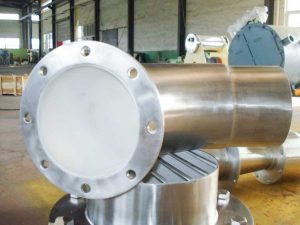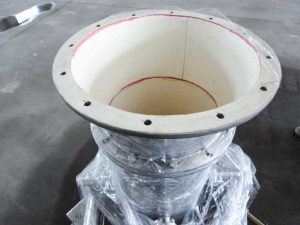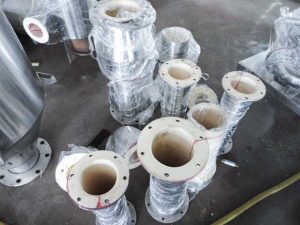Ceramic-lined jet mill avoids contact between raw materials and metal, thereby improving purity
Among jet mills, fluidized bed jet ultrafine mills are widely used. Although it includes multi-nozzle, fluidized bed, horizontal grading and gas sealing technology, it realizes a multi-flow field, bed-layer fluidization and horizontal grading system. Because it is based on the principle of material self-grinding to smash materials, it has less pollution to the product, so it is especially suitable for smashing materials that are not allowed to be contaminated by metals and other impurities. The ceramic lined jet mill is based on the ordinary fluidized bed jet mill. Ceramic anti-wear materials are added to the inner wall of the equipment to prevent the raw materials from contacting the metal materials of the equipment, and to minimize the metal pollution of the raw materials.



The ceramic-lined jet mill mainly has the following characteristics:
1. The crushing process is mainly the collision between the materials, and there is less collision with the inner wall of the crushing zone, so the grinding cavity is less worn. For some special materials that prevent metal pollution, corundum ceramics can be used as the lining, so that the product will not be polluted.
2. Using frequency conversion speed regulation, the fineness of the product can be adjusted to reach the particle size distribution range required by various materials, and the particle size distribution range of the products produced is narrow.
3. The outer shell is made of stainless steel (after polishing treatment, exquisite atmosphere), with independent ceramic grading impeller inside.
4. Material and material impact each other, and the utilization rate is high, so the production capacity is high.
5. It is suitable for ultra-fine grinding of dry powdery brittle materials with Mohs hardness below 8.
6. The machine has simple structure and convenient operation.
The ceramic-lined jet mill model is a rare “true all-ceramic” equipment in the market, including the entire machine lining, feeding mechanism, crushing nozzle, discharging mechanism, grading wheel, etc., all of which are made of 99% alumina. The ceramics or parts are made of zirconia ceramics instead of traditional coatings or mosaic ceramic patches. Through reasonable processing and assembly technology, all impact parts and overcurrent parts can be fully protected by the ceramic module, so that the high-tech materials will not introduce magnetic or non-magnetic metal pollution after the airflow is crushed, and due to the hardness of the ceramic module used High, excellent wear resistance, even high hardness materials can reduce wear as much as possible and reduce the introduction of foreign matter. It can meet the crushing needs of high-purity new materials and the original non-mining industries in the upgrading and transformation process, which can not only meet the larger production capacity, but also minimize pollution and increase the added value of products.
